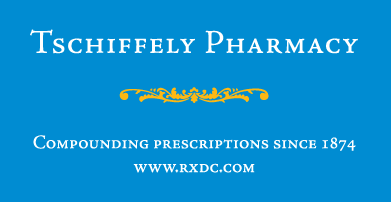
To Buy Ampicillin Online Visit Our Pharmacy ↓

Understanding Ampicillin: a Key Veterinary Antibiotic
Ampicillin has been a cornerstone in veterinary medicine for decades, prized for its broad-spectrum efficacy against both gram-positive and gram-negative bacteria. This semi-synthetic penicillin derivative is commonly utilized to combat a myriad of bacterial infections in animals. From respiratory and urinary tract infections to skin and soft tissue ailments, its versatility and effectiveness have made it an indispensable tool for veterinarians worldwide.
The mechanism by which ampicillin operates is by inhibiting bacterial cell wall synthesis, leading to cell lysis and death. Its success hinges on proper usage, requiring veterinarians to pinpoint the specific bacterial strain responsible for an infection. This ensures targeted treatment, minimizing potential adverse effects and contributing to both animal welfare and public health by curbing antimicrobial resistance.
| Bacteria Type | Ampicillin Effectiveness |
|---|---|
| Gram-positive | High |
| Gram-negative | Moderate |
Common Infections Treated with Ampicillin in Animals

Ampicillin serves as a cornerstone in treating various bacterial infections across multiple animal species. It is particularly effective against respiratory infections, which are common in both small and large animals. In companion animals, like dogs and cats, ampicillin often combats urinary tract infections, providing relief and promoting healing. Livestock, such as cattle and swine, frequently encounter outbreaks of gastrointestinal infections where ampicillin proves to be a vital intervention. Its broad-spectrum activity extends to treating skin infections and soft tissue, often stemming from bacterial wounds or surgical sites. With its wide-ranging efficacy, ampicillin remains an indispensable tool in veterinary medicine, safeguarding animal health across diverse environments.
Ampicillin Dosage: Guidelines for Various Species
In veterinary practice, determining the correct dosage of ampicillin is crucial for effective treatment across different species. For example, in dogs, ampicillin is often administered at doses ranging from 10 to 20 mg/kg every 8 to 12 hours, depending on the severity of the infection. Meanwhile, cats require careful consideration, typically receiving doses of 10 to 20 mg/kg every 12 hours to ensure safe and efficient treatment.
When it comes to larger animals, the guidelines can vary significantly. Horses, for example, might need 10 to 20 mg/kg given intravenously every 6 to 8 hours. Each species demands tailored considerations due to differences in metabolism and drug absorption, emphasizing the importance of precise dosage management in veterinary medicine.
Potential Side Effects and Precautions in Veterinary Use

In veterinary medicine, the use of ampicillin requires a nuanced understanding of its potential side effects. While ampicillin is widely effective against a range of bacterial infections, it can cause gastrointestinal disturbances such as diarrhea and vomiting, especially in sensitive species. Allergic reactions, though rare, may also occur and should be promptly addressed by veterinary professionals. To minimize adverse effects, comprehensive patient history and accurate dosing are crucial. Vets must consider an animal's overall health, age, and species-specific susceptibilities when administering this essential antibiotic.
Strategies to Prevent Antibiotic Resistance in Animals
Addressing antibiotic resistance in animals requires a multifaceted approach, particularly in veterinary applications involving ampicillin. Optimizing dosage and treatment duration minimizes exposure, thereby reducing microbial adaptation. Veterinary professionals are urged to perform culture and sensitivity testing before prescribing ampicillin to ensure its necessity and efficacy. Furthermore, educating pet owners and livestock managers on adherence to prescribed treatments plays a critical role in mitigating resistance.
Veterinarians are also encouraged to explore alternate treatments and combine therapies to disrupt bacterial growth cycles effectively.
| Strategy | Description | |----------|-------------| | Dosage Optimization | Ensures minimal exposure, reducing resistance risk | | Culture Testing | Confirms the necessity of using ampicillin | | Owner Education | Emphasizes the importance of adherence to prescriptions | | Alternative Treatments | Offers solutions outside traditional methods |
Integrating these strategies helps safeguard the future effectiveness of antibiotics in veterinary medicine.
Innovations in Ampicillin Delivery for Veterinary Medicine
Recent advancements in veterinary medicine have significantly enhanced the delivery methods of ampicillin, optimizing its efficacy and reducing treatment times. Researchers have been focusing on microencapsulation techniques that offer controlled release, improving bioavailability and ensuring steady medication levels over time. This innovation allows for better absorption in the digestive tract of animals, minimizing wastage and reducing the likelihood of under-dosing.
Another promising avenue is the use of biodegradable polymers, which serve as carriers for ampicillin, providing a sustained release mechanism. This innovation is particularly beneficial for livestock, where frequent dosing is challenging. These polymers gradually dissolve, releasing the antibiotic at a consistent rate, thereby reducing the need for repeated administrations and enhancing overall animal compliance.
Furthermore, advancements in nanotechnology have allowed for the development of nanoparticle-based delivery systems. This approach increases the stability and solubility of ampicillin in biological fluids, offering targeted drug delivery to affected areas. By concentrating the antibiotic where it's needed most, this method minimizes potential side effects and contributes to more effective treatment outcomes. For further reading, visit the [NCBI](https://www.ncbi.nlm.nih.gov/pmc/articles/PMC3153056/) and [ScienceDirect](https://www.sciencedirect.com/topics/medicine-and-dentistry/ampicillin).